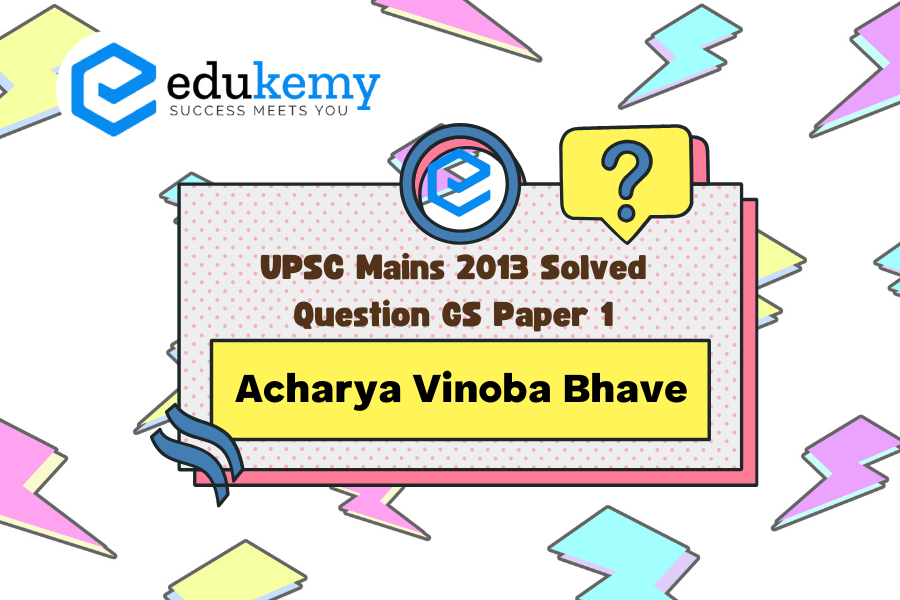The Bhoodan (Land Gift) and Gramdan (Village Gift) Movements spearheaded by Acharya Vinoba Bhave emerged as pivotal initiatives in post-independence India, aiming to address agrarian issues and social inequalities. Founded on the principles of Sarvodaya (welfare of all), these movements sought to redistribute land from the affluent to the landless poor and promote community-based ownership of resources. The primary objective of Bhoodan was to encourage landowners to voluntarily donate a portion of their land to the landless, thereby fostering a more equitable distribution of agricultural resources. On the other hand, Gramdan envisioned the collective ownership of land and resources at the village level, aiming for self-sufficiency and communal prosperity.
However, the success of these movements is subject to critical examination. While they garnered significant attention and participation, particularly during the 1950s and 1960s, their long-term impact on alleviating poverty and fostering rural development remains debated. Challenges such as bureaucratic hurdles, resistance from vested interests, and inadequate implementation mechanisms hindered their effectiveness. Additionally, the sustainability of the redistributed land and the empowerment of beneficiary communities over time are areas of contention. Despite these challenges, the Bhoodan and Gramdan Movements left a lasting legacy by igniting discussions on land reforms, social justice, and community-driven development in India.
Tags: Post-independence consolidation and reorganization within the country.
Contents
Decoding the Question:
- In Introduction, try to begin with the backgrounds of the Movements briefly.
- In Body,
- Discuss the objectives of the Movements.
- Discuss the success of the Movements.
- Conclude with its real progress, as felt by the mass.
Answer:
Provision of Land by a gift for the common benefit of the landless was the cornerstone of the Bhoodan movement initiated by Acharya Vinova Bhave in a village in Maharashtra.Later, Bhoodan gave way to the Gramdan movement which began in 1952.The objective of the Gramdan movement was to persuade landowners and leaseholders in each village to renounce their land rights and all the lands would become the property of a village association for egalitarian redistribution and joint cultivation. The first village to come under Gramdan, was Magroth, Haripur, Uttar Pradesh.
Objectives of the Bhoodan and Gramdan Movements:
- Bhoodan was an attempt at land reform, at bringing about institutional changes in agriculture, like land redistribution through a movement and not simply through government legislation but also through voluntary donation. This was aimed to reduce inequality in the society.
- Eminent Gandhian constructive worker Acharya Vinoba Bhave drew upon Gandhian techniques and ideas such as constructive work and trusteeship to launch the Bhoodan Movement in the early 1950s.
- The Gramdan Movement is the latest phase of the Bhoodan movement. It is the most significant development of the Bhoodan movement. This movement, at first grew spontaneously in 1952 in the village Mangroth in U.P.
- The objectives of the Gramdan Movement were– Social reconstruction, Economic upliftment, building a new social order based on equality and cooperation, spirit of renunciation of private ownership, and collective ownership and communism.
- In the Gramdan Movement, an entire village would pool their share for the land to be cultivated cumulatively and everyone would get their share on a need basis.
The success of the Bhoodan and Gramdan Movements:
- Initially, the Bhoodan Movement achieved massive success. Even without being compelled to donate the land, more than 4 million acres of land were donated by the land owners.
- Since the land was donated, it helped reduce inequality in the society. This movement established an idea among the masses that land is a source of nature and it must belong to all equally.
- Gramdan movement brought more inclusiveness in the society as there would be no land owners and the community would allocate resources to everyone as per the need.
- The slogan popularized by Karl Marx which says, “From each according to his ability, to each according to his needs”, was aptly implemented by the Gramdan movement.
Limited impact:
- After 1969 Gramdan and Bhoodan lost their importance due to the shift from being a purely voluntary movement to a government-supported programme.
- In 1967, after the withdrawal of Vinoba Bhave from the movement, it lost its mass. In the later period, landlords had mostly donated land under dispute or unfit for cultivation.
- The whole movement was treated as something different from the general scheme of development rather than combined with the existing institutional This separation from the mainstream scheme seriously affected its continuation as a policy.
- In many cases, the farmers took back their land. Bribery too became prevalent, while distributing the donated land. A lot of donated land remained undistributed.
- Gramdan too did not achieve much success. The movement was successful in tribal areas, where there was a little disparity in ownership of the land.
Although corruption, bribery, land litigation, political gimmick shadowed both the movements and hampered the desired progress, it helped in ending illiteracy and mutual quarrel among people to some extent. The problem of rural indebtedness was reduced. Rural economy and agriculture improved. The standard of morality increased among people. The movements have had more success among the Adivasis, who have a strong tradition of social cohesiveness . Thus, both these movements, despite having setbacks in achieving the full potential in land reform, provided much needed ground for land reform awareness.
In case you still have your doubts, contact us on 9811333901.
For UPSC Prelims Resources, Click here
For Daily Updates and Study Material:
Join our Telegram Channel – Edukemy for IAS
- 1. Learn through Videos – here
- 2. Be Exam Ready by Practicing Daily MCQs – here
- 3. Daily Newsletter – Get all your Current Affairs Covered – here
- 4. Mains Answer Writing Practice – here


